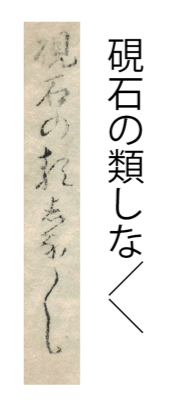Reading Japanese maps and marketing practices 1 - introduction

Before reading a source like this one, it is necessary to take into consideration that the information on this map has been written using different ideographic iteration markers or odoriji (踊字). As mentioned in previous exercises, odoriji were commonly used in hand-written texts and engraved prints during the Edo period. The character 々 used today to indicate that the preceding kanji before should be repeated is the only survivor of a tradition prior to Meiji that included several similar iteration characters.
In this source, a very long brush stroke with a small angle in the middle implies the repetition of the last two hiragana characters or the previous kanji as in for example, しな/\(しなじな)、さま/\(さまざま)、色/\(いろいろ). Meanwhile, the small stroke up-down (ゝ) implies the repetition of the previous hiragana character, for example, すゝり (すずり). Due to its graphical simplicity, the odoriji ゝis one of the most challenging characters to distinguish in a kuzushiji text.
